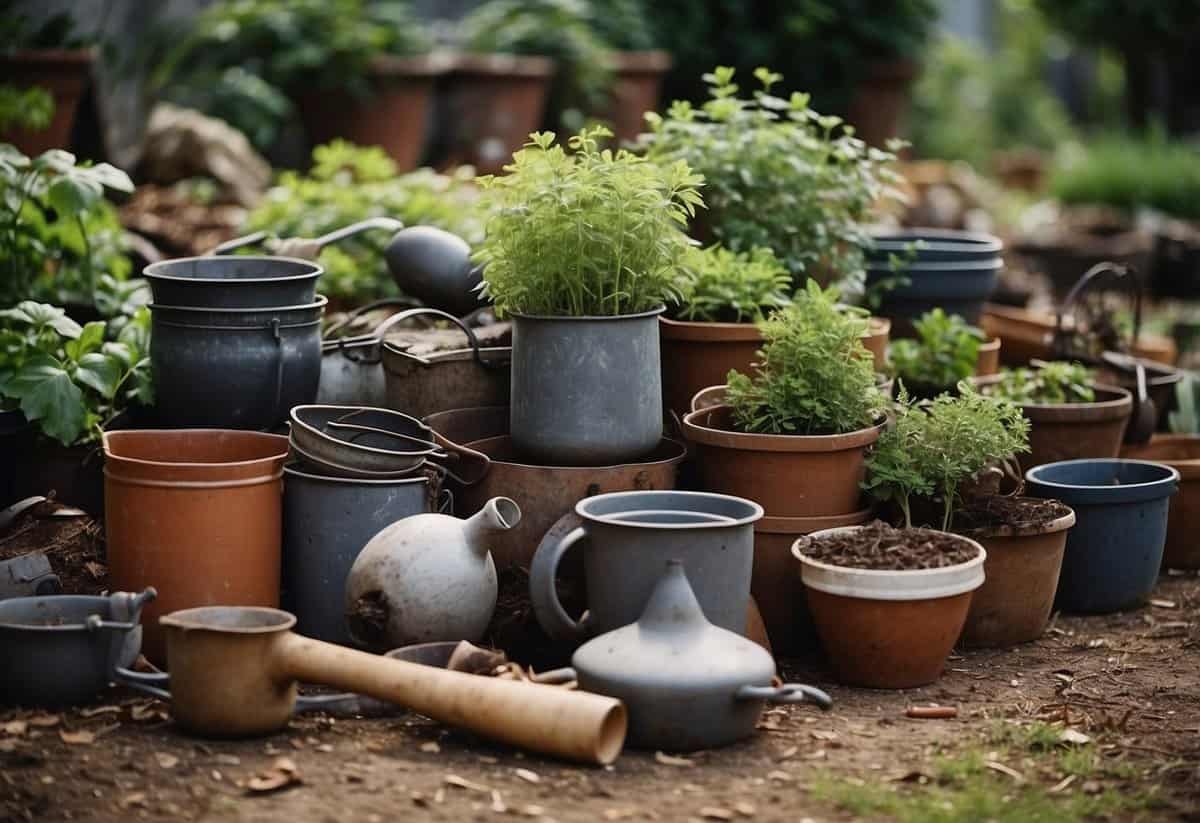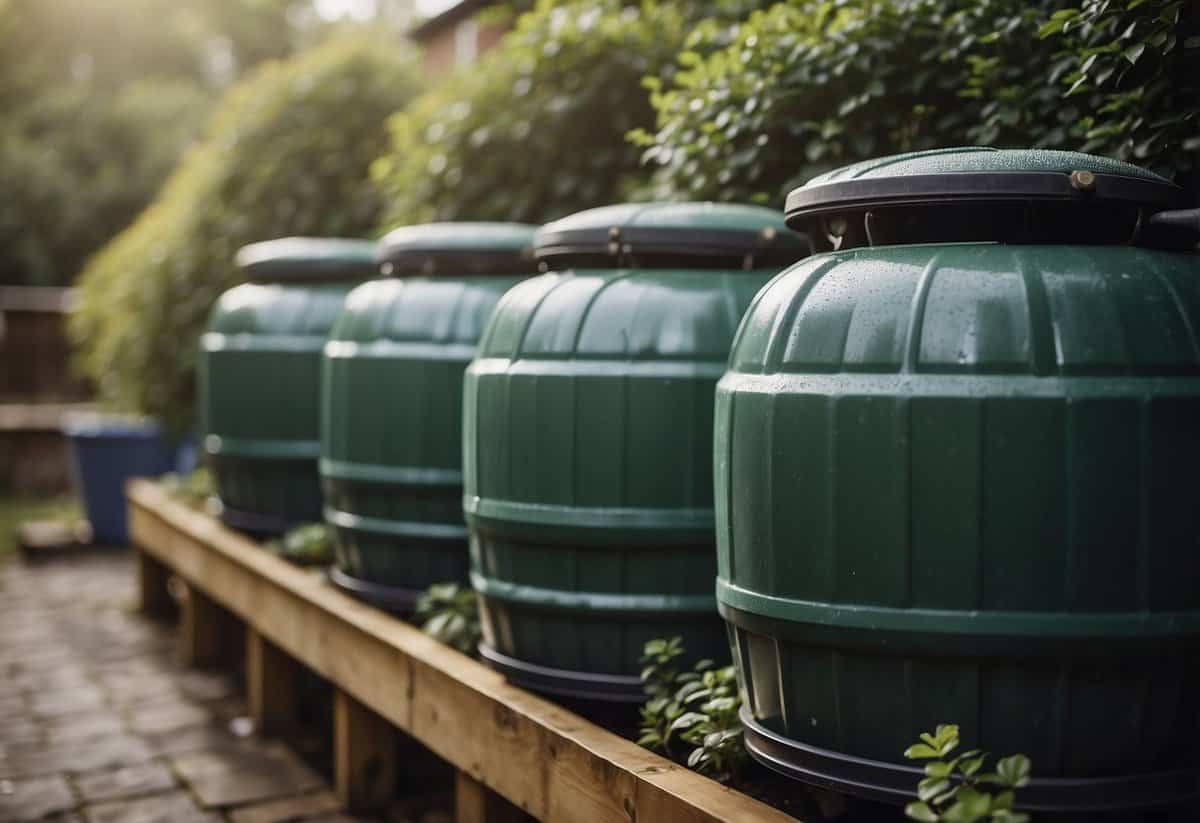Garden Clearance Tips: Easy Steps for a Tidy Yard
Tackling an overgrown garden can seem like a daunting task, but with the right approach, it can become a manageable and even enjoyable project. Whether your garden has gotten wild over the past season or you’ve just moved into a new home with an unkempt yard, a good plan and some simple tips can make all the difference.

How do you turn a cluttered garden into a beautiful outdoor space? By learning some key strategies and knowing which tools to use, you can transform even the most overgrown gardens. With a little effort and some handy advice, you’ll be well on your way to creating the garden of your dreams.
1) Declutter garden waste

Start by sorting through your garden to identify different types of waste. Separate recyclables, compostables, and trash.
Gather fallen leaves, branches, and grass clippings. Consider composting organic materials to enrich your soil.
Tackle any broken yard tools or furniture. Either repair them or dispose of them properly. If you have oversized items, think about storing them under a porch or deck.
Finally, clear out sheds and greenhouses, making trips to the recycling center as needed.
2) Recycle old pots

Don’t toss your old plant pots. You can reuse them in various ways.
Use them to plant new flowers or vegetables. They are great for starting seedlings too.
Large plastic pots can be buried in the garden. This makes it easy to switch out plants.
Consider taking old pots to a recycling center. Many places like Lowe’s accept them.
3) Compost organic material

Composting is a great way to dispose of garden waste. Build or buy a compost bin and place it in a sunny spot. Gather materials like vegetable scraps, plant debris, and fallen leaves.
Layer greens and browns, adding more browns than greens. Keep the pile moist but not too wet. Turn it regularly to add air.
Avoid putting meat, dairy, and diseased plants in your compost. Focus on organic materials to enrich your garden soil. For more tips, check out this guide on composting for beginners.
Happy composting!
4) Trim Overgrown Hedges

Trimming your hedges regularly keeps them healthy and neat. Start by using loppers to remove about one-third of the older stems. This allows sunlight to reach the inner parts of the hedge.
Look for long stems that stick out and cut them close to the ground. For splitting stems, trim just above the Y-shaped split. Using these methods will help you shape your hedges like a pro. For more detailed steps, check out this guide on how to trim overgrown hedges.
5) Remove Weeds Regularly

Keeping your garden free of weeds can make a big difference. Weeds can steal nutrients from your plants and make your garden look messy.
Make it a habit to pull out weeds as soon as you see them. Regular weeding prevents them from spreading and taking root.
Using a hoe can help you cut weeds close to the soil, making it hard for them to grow back. Applying mulch can also prevent new weeds from sprouting by blocking sunlight. For more methods, visit efficient weed removal.
6) Mow the lawn

Make sure to set your mower at the highest setting that suits your grass type. Only cut the top third of the grass blades. This keeps your lawn healthy and green.
Avoid mowing your lawn when it’s wet. Wet grass can clump and block your mower. The best time to mow is mid-morning when the grass is dry.
Change your mowing pattern regularly. Alternating directions each time you mow will help reduce soil compaction and prevent weeds. This will keep your lawn looking its best.
7) Prune Shrubs and Trees

Pruning shrubs and trees is key to keeping your garden healthy and tidy. For smaller branches, cut back to an outward-facing bud or intersecting branch.
Use a pruning saw or bow saw to remove large branches. Make a cut underneath the branch about 6 to 12 inches from the trunk. Then, cutting from the top, remove the branch properly.
Make sure to remove dead or dying branches to promote plant health. Avoid topping trees, as it destroys the plant’s natural shape.
8) Use a leaf blower

A leaf blower can be a great tool for clearing your garden. Hold the blower at your side and angle it slightly toward the ground. This helps direct the leaves where you want them to go.
Choose a good starting point around the edge of your yard. Work your way inward, pushing the leaves to a central spot. Remember to wear safety gear, like goggles and gloves, to protect yourself.
9) Install a Rainwater System

Adding a rainwater collection system to your garden is a great way to conserve water. Start by choosing a suitable rain barrel. Look for one with a dark color to prevent algae growth.
Attach gutters and downspouts to your roof to direct rainwater into the barrel. Ensure all connections are secure and free of debris. Tighten spigots and hose connections finger-tight to avoid leaks.
10) Organize Tool Storage

Start by making use of wall space. Install a pegboard to hang tools like shovels and rakes. This will keep them off the ground and easy to access.
Repurpose old buckets and boxes to store smaller items. Place these containers on shelves or in a designated corner.
Consider a tool tower rack for larger tools. It’s freestanding and helps keep everything neat and tidy.
Why Garden Clearance Is Important

Regular garden clearance is vital for maintaining the health of your plants and keeping your outdoor space looking beautiful. It helps prevent plant diseases, enhances the beauty of your garden, and ensures safety.
Benefits for Plant Health
Clearing your garden regularly helps plants stay healthy. When you remove dead leaves and branches, you stop pests and diseases from spreading. Dead plant material can harbor insects and fungi that harm living plants.
Overgrown gardens can choke smaller plants. By removing weeds and thinning out crowded areas, you allow your plants to get the sunlight and nutrients they need. This promotes stronger growth and better blooms.
Proper clearance also helps with soil health. When you rake up leaves and old mulch, it improves air flow and reduces the risk of soil-borne diseases. This helps your plants thrive and look their best.
Enhancing Aesthetic Appeal
A clean garden looks beautiful and inviting. Removing dead plants, trimming overgrown shrubs, and raking leaves make a big difference in appearance. It creates a neat and orderly space that you can enjoy.
Maintaining your garden also lets you showcase your favorite plants and flowers. When everything is tidy, the colors and textures of your plants stand out. This makes your garden more enjoyable and attractive.
Additionally, garden clearance can uncover hidden features like pathways or garden ornaments. These elements add charm and interest to your outdoor space. Keeping your garden clear ensures these features remain visible and appreciated.
Effective Strategies for Garden Clearance

Tackling an overgrown garden can feel daunting, but using the right strategies can make the job smoother. This section focuses on timing your clearance work and responsibly disposing of garden waste.
Seasonal Clearance Tips
Different seasons require specific clearance tasks. In spring, focus on removing dead plants and debris to make way for new growth. Summer is ideal for trimming hedges and mowing the lawn frequently. During autumn, clear fallen leaves and prepare your garden for winter by protecting vulnerable plants. Winter can be a good time to prune trees and shrubs since many plants are dormant.
Creating a seasonal checklist helps you stay on top of garden chores. This approach ensures that tasks are spread throughout the year, making them more manageable. Remember to consider local climate and plant types, as they can affect the timing and type of work needed.
Sustainable Disposal Methods
Disposing of garden waste sustainably helps the environment. Composting is a great way to recycle organic waste. You can compost leaves, grass clippings, and kitchen scraps to create nutrient-rich soil. Set up a compost bin in a corner of your yard to start this process. If you have large branches, consider chipping them into mulch.
Green waste collection services can also be helpful. Many local councils offer bins or collection days for garden waste. Avoid using plastic bags for disposal to reduce plastic waste. Instead, use biodegradable yard waste bags. Recycling and reusing materials, like turning old wooden pallets into raised garden beds, can also contribute to a garden clearance project being more sustainable.
Avoiding Common Garden Clearance Mistakes

To have a successful garden clearance, it’s crucial to avoid over-pruning and ignoring weed growth. These mistakes can seriously affect the health and appearance of your garden.
Over-Pruning
When clearing your garden, it’s easy to get carried away with pruning. Cutting back too much, especially at the wrong time of year, can harm your plants. Always use sharp, clean tools to make precise cuts.
Prune in late winter for most plants. This encourages strong growth in spring. Removing more than 25% of a plant’s foliage at one time can stress and weaken it. Follow a general rule of cutting no more than one-third of the plant’s growth. This prevents shock and helps maintain health.
Remember that flowering plants may have specific pruning needs. Research each plant type to know the best time and method to trim. Over-pruning can also reduce blossom production, which is vital for some garden plants.
Ignoring Weed Growth
Weeds can quickly take over if you neglect them during garden clearance. They compete with your plants for water, nutrients, and sunlight. Removing weeds regularly helps maintain a healthy garden environment.
Use tools like a hand fork or hoe to uproot weeds. Be sure to pull out the entire root to prevent regrowth. Mulching can be an effective barrier against weeds. Spread a thick layer of organic mulch, such as bark or straw, around your plants. It suppresses weeds and helps retain soil moisture.
Chemical weed killers can be useful but use them sparingly. They can damage other plants if not used correctly. Organic options, such as vinegar or boiling water, can be safer alternatives. Always read product labels and follow guidelines to avoid harming your garden.







